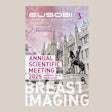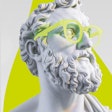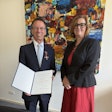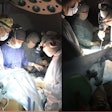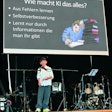
There's good news for those looking to brush up on their MRI knowledge. There are a variety of resources to choose from, whether it's a course, safety information, and now textbooks. Many of these resources -- including textbooks -- may be found online. The benefit of a website is, of course, it's easy to keep up-to-date and it's accessible from anywhere, according to John Talbot, an author and presenter on www.MRIeducation.com.
"Our own book -- the world[wide] best seller MRI in Practice -- has already proved itself to be a useful resource and our live course (of the same name) manages to link to the published text and provide greater scope for the use of multimedia such as 3D CGI animations," he said. "However, we realized that there was still a missing link between these two delivery methods. Books, although universally available, date quickly, particularly in the fast-changing field of MRI. Live lectures we deliver on the MRI in Practice course provide multimedia content and networking opportunities but, despite running the course in 17 countries, it is not accessible to everyone."
 MRI education and training websites make it easy to keep up to date and are accessible from anywhere.
MRI education and training websites make it easy to keep up to date and are accessible from anywhere.
Dr. Peter Rinck, professor of radiology and magnetic resonance and president of the Council of the Round Table Foundation and European Magnetic Resonance Forum (EMRF) -- and now editor-in-chief of an MR education website (www.magnetic-resonance.org) -- puts it even more succinctly.
"You can check and read it wherever you are," he said. "On the Internet, you reach more people. You can also reach those regions of the world where people don't have money to buy books."
What makes Rinck's website different than many others is it's a scientific textbook. He along with contributing authors wrote an MRI primer in the early 1980s intended for use as the basic textbook for teaching courses of the EMRF, a chapter of the Round Table Foundation.
Five editions were published in the next 20 years, and the book was translated into German, Spanish, Portuguese, Italian, Russian, Japanese, and Chinese. The contrast simulation software program MR Image Expert was included on a CD. Videotapes and an animated CD version also were available.
After the last English edition went out of print, it was decided to turn the sixth edition into a free e-learning textbook on the Internet.
 Early Hemingway is the order of the day on the Internet, according to Dr. Peter Rinck.
Early Hemingway is the order of the day on the Internet, according to Dr. Peter Rinck.
Although the website resembles a textbook, Rinck made certain changes to ensure the layout was appropriate for the Internet. Primarily, the length of each page was tailored in an effort to keep scrolling to a minimum. "You still have to scroll a little bit. I'm sorry about that," he said. "The text has to be easy. Early Hemingway. Short sentences. The graphics have to be easy too."
Graphics are important elements for other radiology textbooks as well. While theirs isn't solely an MRI textbook, Dr. Maarten van Leeuwen and Dr. Wouter Veldhuis published Diagnostic Radiology -- A Dynamic Approach to Abdominal Radiology, a radiology textbook for use specifically on the iPad.
"Dr. van Leeuwen and Dr. Veldhuis' book ... takes a completely new approach to radiology teaching by immersing readers into fully interactive and scrollable real cases, such as encountered in daily clinical practice," according to their colleague Dr. Tim Leiner, PhD, from Utrecht University Medical Center in the Netherlands. "In this textbook, radiologists can [attempt to] read a case as if sitting behind a radiology workstation. Once this is done, tapping a button takes the reader through the case in an interactive way, as if the expert radiologist was sitting right next to them."
All MRI resources try to distinguish themselves, and what sets MRIeducation.com apart is the philosophy behind it, according to Talbot.
"As professionally qualified educators, Cathy [Westbrook, the other author and presenter] and I have spent the last few years reconceptualizing MRI education to address the varied learning styles of MRI practitioners and to fill some of the gaps presented by existing media such as books," he noted.
They thought a website might fill the gap by providing rich multimedia content to a global audience, complementing the book and allowing revision of the course topics.
 John Talbot with his business partner Catherine Westbrook.
John Talbot with his business partner Catherine Westbrook.
"This concept has been redirected recently to take advantage of the proliferation of touchscreen mobile devices," Talbot said. "We realized that content developed for these devices can be downloaded and accessed offline and at any geographical location, and, like Web content, can be readily updated."
MRIeducation.com is in the process of releasing a range of mobile MRI education apps, the first four of which are already in the iTunes app store, he added.
Rinck's site, on the other hand, is more low-key.
"We have very little moving stuff because that distracts," he said. "Basically, I have seen that people learn and understand better if there's not too much moving on the page. There are moving sequences where picture contrast changes and so on. We have picked up some of the simulations, but not in Flash because Flash is not available everywhere."
In fact, even the background is simple: It's in gray. "That's also because if there are too many colors people get distracted," he said.
Both Talbot and Rinck stress the websites are supplements to MRI education, to assist people who want to check something or brush up on their knowledge.
"The site gives instant access to learning materials that teach the underpinning principles of MRI and that are taught in a way that is readily accessible to radiologists and technologists/radiographers," Talbot said. "From our perspective, the site is invaluable because without it we would not be attracting radiologists from Europe."
Their course has already become the official theoretical component of a radiology education program in the United Arab Emirates and Saudi Arabia, which Talbot credits from the website.
The magnetic-resonance.org site is a great resource to check information, but also it's a primer, according to Rinck.
"If you start at chapter one and go through it, you have the perfect primer," he said. "In the beginning [in the early 80s], I wrote it for myself to try to understand what I'm doing and what I'm learning because I was the only radiologist in a bunch of natural scientists."
Now the primer has evolved and moved with the times, and it is peer-reviewed by a number of people in the field with different backgrounds and different disciplines.
Rinck at least doesn't seem to mind competition. "In general, it's always better to have two or three textbooks about the same topic, or, in this case, several websites so that if you don't understand it in one, you go to the next one and read it there. Different explanations by different teachers often let everything just fall into place."










